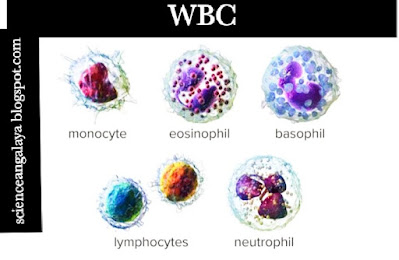BLOOD CHARACTERS AND TYPES
BLOOD
- Blood is a connective tissue consisting of plasma (fluid matrix) and formed elements.
- Blood is the most common body fluid that transports substances from one part of the body to the other.
i.e., Blood, fluid that transports oxygen and nutrients to the cells and carries away carbon dioxide and
other waste products.
The plasma constitutes 55% of the total blood volume.
The remaining 45% is the formed elements that consist of blood cells.
The average blood volume is about 5000ml (5L) in an adult weighing 70 Kg.
CHARACTERS
- It is a tissue because it is a collection of similar specialized cells that serve particular functions.
- These cells are suspended in a liquid matrix (plasma), which makes the blood a fluid.
- In the lungs, blood acquires oxygen and releases carbon dioxide transported from the tissues.
- The kidneys remove excess water and dissolved waste products.
- Nutrient substances derived from food reach the bloodstream after absorption by the
gastrointestinal tract.
- Glands of the endocrine system release their secretions into the blood, which transports these
hormones to the tissues in which they exert their effects.
- Many substances are recycled through the blood;
for e.g., old red cells - iron released - plasma - new red cell production -reused.
- Hemocyanin, a copper-containing protein chemically unlike hemoglobin, is found in some
crustaceans. Hemocyanin is blue in colour when oxygenated and colourless when oxygen is
removed.
- Some annelids have the iron-containing green pigment chlorocruorin, others the iron-
containing red pigment hemerythrin.
- In many invertebrates the respiratory pigments are carried in solution in the plasma, but in
higher animals, including all vertebrates, the pigments are enclosed in cells; if the pigments
were freely in solution, the pigment concentrations required would cause the blood to be so
viscous as to impede circulation.
A. PLASMA
constituents (0.9%), organic constituents (0.1%) and respiratory gases are dissolved.
- The four main types of plasma proteins synthesized in the liver are
i. albumin,
ii. globulin,
iii. prothrombin and
iv. fibrinogen
B. FORMED ELEMENTS
Red blood cells/corpuscles (erythrocytes) (RBC), white blood cells/corpuscles (Leucocytes)
(WBC) and Patelets are collectively called formed elements.
I. RED BLOOD CELLS
Red blood cells are abundant than the other blood c
ells. There are about 5 million to 5.5millions of RBC mm-3
of blood in a healthy man and 4.5-5.0 millions of RBC mm-3 in healthy women
Erthrocyte is a hormone secreted by the kidneys in response to low oxygen and helps in Differentiation of stem cells of the bone marrow to erythrocytes (erythropoiesis) in adults.
The ratio of red blood cells to blood plasma is expressed as Haematocrit (packed cell volume).
WHITE BLOOD CELLS
- White blood cells (leucocytes) are colourless, amoeboid, nucleated cells devoid of
- haemoglobin and other pigments. Approximately 6000 to 8000 per cubic mm of WBCs are
- seen in the blood of an average healthy individual.
- The different types of WBCs are shown in Figure 7.3.
- Depending on the presence or absence of granules, WBCs are divided into two types,
- Granulocytes
- Agranulocytes




Comments
Post a Comment